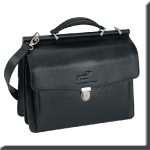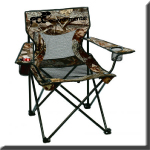|
Now that we’ve examined why in the next few pages we’ll discuss how to create and implement your company store. We’ll examine options available to you and formulate the criteria that will help you provide an effective store solution for your
company.
A prospective client of ours was looking for a better way: “There are so many issues clamoring for our attention,” she said, “I want our staff focused on sales and marketing, not fulfilling orders. We spend an enormous amount of time and energy managing these resources but I need our entire department’s focus to be on our primary objectives.” As the Vice President of Marketing, she was trying to discover how to get the company’s branded products to the field faster and with fewer resources. Convinced there were possible alternatives, she began to investigate alternatives within her existing vendors. A few had limited experience in storing product; the majority never fulfilled an entire program. Frustrated by a lack of solutions from her existing vendors, she began a search outside for alternative solutions. Along the way, she discovered that many of her current vendors had the capabilities at their fingertips, but very few professed managing stores as a core competency of their business. Embroiderers, printers, and other companies, all claimed they could create and manage a successful program. But she needed to know some criteria for deciding “who” and “which” options were best for her and her colleagues.
1) Our Client: Advertising Incentives starts with who you are serving first. It is important to establish who is best served by your Company Store and why you wish to provide one. Some stores exist merely to provide logoed apparel to employees. Some companies mandate their employees wear branded apparel so having a system that easily manages the program is imperative.
There are companies who have multiple facilities and simply need help distributing collateral. Other companies want to streamline marketing materials of all kinds (collateral, promotional, etc.) and provide one single location for their
colleagues to shop from. Too often, a company approaches a store with the idea that merely providing a place for employees to purchase promotional items is sufficient. What you may want to consider is not just a store for single employee
purchases but a store for your entire organization: sales reps, managers, employees and executives. Some stores offer the sophistication of “hiding” categories from certain users (expensive executive gifts, for example, might not need to be broadcast to everyone). Establishing who your store will serve will determine inventory purchasing methods, checkout options, design and certainly impact marketing.
2) Once you’ve decided “who”, it is important to distinguish what your store will provide. The stores offered today are much more sophisticated than merely getting promotional items to your colleagues. They have options for managing
direct mail, uploading artwork, uploading mailing lists, providing departmental purchasing reports, building ads, creating corporate identity products (business cards, stationery, etc), managing forms, managing logo specifications, etc. Dream big when starting your store: you can always layer in other features as you grow, but knowing what you want the store to ultimately provide will help with vendor selection and marketing and may help alleviate administration not only for you and your department, but for other colleagues as well. Consider which products you will provide: Collateral? Forms? Promotional? Online-ads? Corporate Identity? Tradeshow booths? Signage? The best solution is a store that provides all branded materials in one convenient location and determining what you provide will help you narrow down your search for a vendor. Never forget that properly selected branded materials hold significant value for your company: they promote your brand, aid in the selling process, generate goodwill and communicate your strengths in the marketplace. Don’t miss an opportunity to provide a wide range of branded materials to your colleagues faster and with less hassle than ever before.
3) Once you’ve established “who” and “what” you must now make one of the most important decisions that will affect the success of your Company Store: whom you will select as a partner. Selecting the appropriate vendor is crucial; if selected well, this vendor can become a strategic part of your operation and an extension of your marketing department without the added payroll burden and human resource management. Some vendors maintain small amounts of inventory for clients. Some excel at warehousing and distribution. Others provide top quality printing but with no fulfillment services. Some sell only apparel and some only promotional items. Some offer sophisticated customer service support and training. The most important criteria to establish is understanding.
Whomever you partner with must understand they become an extension of you. What they do reflects you and your company.
Given that the technological solution each vendor provides is fairly equivalent, three of the most important criteria are (1) fast and accurate fulfillment, (2) excellent response times (3) a balanced approach to servicing your colleagues. Obviously, the revenue for operating the store and for purchasing materials comes from you and your department. But your colleagues in the field drive the perception of the store: this in turns drives the revenue for the store. What your colleagues think of the store and it’s service will determine whether or not they use it to its fullest extent.
Regarding speed, the less critically perceived the merchandise, the more the delay. Purchasing receives low priority unless pushed by deadlines. Most orders are last-minute orders, and this is part of the reason why a store exists. It is why
a strong vendor is imperative: mishandling these orders, slowed distribution times and mismanaging relationships lower the perception of your store’s effectiveness and your decision. Conversely, expedited transactions, immediate availability, ease of use, friendly, helpful service increases the perception of the store and makes your decision enormously popular and evident to all. Will your vendor be responsive? Your vendor services other clients, but you don’t care (I feel the same way about my vendors). The only important client is me. The reality is, most vendors are serving multiple clients while juggling the perception that you are the only one they have. Will you have direct contacts within the business that can respond to programming changes on the store? Inventory levels? Questions about rebates and purchases? Having a dependable, responsive client that can handle the demand is imperative.
4) All vendors are in business to make money by selling product. With promotional products in particular, inventory is easily the one area that can become the most expensive. Most stores exist to make branded product and collateral immediately available. For small quantities and short lead times, it is necessary to have a store to be able to do this. For longer lead times and larger quantities you should handle your orders just like every other purchase, in other words do not utilize your inventory for large quantity purchases. With some companies the inventory item can carry the fulfillment mark-up. In other words, instead of paying pallet fees, credit card processing fees, pick-and-pack fees (and more) some companies will mark up the product for inventory 10% - 20% higher than market value to pay for handling. This is a reasonable practice as it makes paying for the program and reporting more manageable. But some product orders should not be fulfilled out of inventory: trade shows, conferences and other large marketing events have ample lead-times and the product requires
little handling so avoid using your inventory for these types of purchases. Sometimes it is unavoidable, which is okay: this is the reason why the store exists: it is nice to have a store to fall back on in case of an emergency.
Purchases from the inventory make sense for items like apparel. Apparel is probably the most expensive item in your marketing products and the main reason why most companies consider a store in the first place. The promotional industry is a $16 billion dollar industry, 30% of which is apparel. It’s where some companies make serious money and where you could lose. Be cautious but practical in inventorying your apparel. You must have enough inventory to accommodate orders but not so much inventory that product doesn’t move. Most vendors have sensible ways to manage your inventory and prevent you from ordering too much such as setting low thresholds or providing tools like the Apparel Matrix to aid in quantity decisions. The key is: don’t under stock as you’ll run out (very irritating to your colleagues) and don’t overbuy. There is no correct quantity, each client will be different but a good vendor knows he cannot risk a great client for one big inventory order. The vendor cannot afford maximizing your budget in one or two areas; their future depends on a successful
store operation as a whole.
5) Purchasing options: Advertising Incentives handle a variety of options for purchase, including credit card, purchase order, gift certificates, points based systems and custom check-out:
Credit Card: all major credit cards with secured transactions through third party companies such as Verisign
Purchase Order: custom check-outs by department codes, built-in approval processes
Points: a system used for performance programs and retention effort
Gift Certificate: Amazon-like purchasing, tracking and remitting
Purchasing methods should be given careful consideration, particularly as your store grows. Some stores allow for multiple purchasing options to be used simultaneously. You may not need a points system now, but once the Sales department sees how effective the store is, the Sales Director may want to include a points based system as a reward for sales growth. Or the Customer Service Director may want to start giving gift certificates to the store as a reward. Once you launch your company store, you will receive immediate feedback, some of which may be “I wish we had an option to ... “. Carefully considering these options in the beginning will help prevent a complete overhaul of the store down the road. We recommend a bi-annual assessment (or at least an annual assessment) of the store for review. This allows time to accumulate
recommendations from colleagues and an opportunity to make improvements because there will be modifications along the way. Most options, such as purchasing options, can be activated when needed but considering all possibilities on the front end will save time and money in the future.
6) Marketing: This is the good news/bad news part. With a strong partner in the creation and fulfillment of your company’s store, your involvement in retailing merchandise will be minimal. Ideally, once you have a store it should consume none of your time again. Since we do not live in an idyllic world, be aware it will still take some of your time: this is the bad news. Properly marketing your store consistently will determine whether your store is remembered as a success or an audacious mistake. Even with cautious purchasing to start the store if you do nothing to get the word out it will accumulate inventory and it will fail. There are plenty of avenues, some slightly intrusive, most permission-based, that a vendor can help with. Rely on your service provider for ideas and possibly even creative to help market the store. Some will be ecstatic to help, for others it might stretch their creative boundaries. Though every organization (particularly larger ones), struggle with clogged communication channels the more access your provider has to your colleagues the more you can ensure the stores success. No one - not the vendor, certainly not you - wants your store to be a number on a PL someone up the chain-of-command calls into question. Without frequent marketing, your store will fail. Even the bad news is not so bad:
marketing is your field of expertise, besides, most vendors should have experience marketing stores. Ask questions about how they can help market the store up front, don’t wait until you’ve signed an agreement to ask about marketing. It is often overlooked, yet absolutely crucial to your success. Remember to make consistent marketing of the store a priority. It will
remind colleagues of it’s availability and will help promote your brand.
7) How much will my store cost? Some store solutions are FREE. That’s right: FREE. (Don’t we love that word?) This may be all you need. A free store provides the basics: makes materials accessible and, for the most part, available. What you spend on your store depends on your needs. If you simply need a way to advertise what products you have available a free store might be a decent solution. If you need departmental check-out processes, accounting codes, purchase order approvals, strong reporting: consider spending a little at start-up.
Most free stores cannot meet the demands of a large client. Some vendors do not charge to set-up a store but want an exclusive contract to all purchasing. Some vendors do not take stores seriously enough to charge for them. Some vary depending on the amount of revenue you plan to spend. Many companies get worked up over the wrong expense. They overlook the big expense
(inventory) and instead, fixate on the smaller expense (start-up costs). We provide stores both ways: free of charge and fee-based. We once lost an opportunity to operate one company’s store because the option we
presented was not free (we priced it based on the client’s needs), this same client came back in less than two years and discovered (the hard way) that the vendor servicing their account was not providing the service the client demanded. The bottom line of store costs is: a free store may be just what you need. But if service to your colleagues is imperative and you believe this solution can help alleviate payroll and the administration of your branded materials, don’t let “free” get in the way of providing the right solution for your business. The stores that are fee-based are generally nominally priced. Monthly hosting charges, per item upload charges and distribution fees may be involved. Smart vendors will simplify the pricing for you so that you can easily reconcile your purchases.
A Final Note
As the need for faster responses and immediate availability grow, the management of your branded materials will take on a decidedly large portion of time for you and your staff. There are solutions in the marketplace that can help, some of which will surprise you as to the depth and range of services you no longer have to perform yourself.
Most importantly, the creation of marketing materials comes at a great cost: it costs to create and communicate the availability of these items, it costs to manage the usage of these items but the biggest expense of all is to invest labor and money into the creation of branded materials and not make them available to your colleagues. As a friend of mine states often “these products do your business no good on a shelf in a warehouse”.
One Vice President of Marketing expressed it succinctly, “we spend a lot of money creating professional tools for our salespeople and we don’t think clearly through to the distribution process.” Professionals in marketing know it is imperative these products get into the hands of those that need them. The demand for ROI dictates this. Promoting your brand is your concern and it should be the shared concern of any vendor-partner you have.
If you have any questions or comments about creating or improving Your Company Store, call
(Shelly Anlauf) at 952-238-9661 or e-mail shelly@advincentives.com
I hope this information has helped provide insight as to how AI’s Team creates successful stores custom tailored to our clients specific needs. Thank you, Shelly Anlauf, Sales Manager, Advertising Incentives. www.advincentives.com
|





